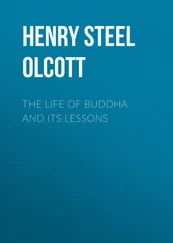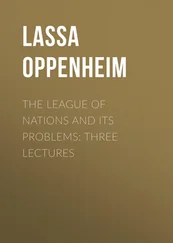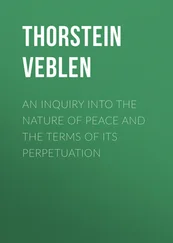Modern research has confirmed that pleasure and displeasure are distinct states, not just opposite ends of the same spectrum. Perhaps surprisingly, the amount of pleasure we experience is found to be relatively independent of how much displeasure we experience, at least when measured over reasonably long periods of time. You can have a lot, or a little, of one or both in your life. A heroin addict might have a life packed with intense pleasure and intense displeasure, whereas a routine-bound suburban drone might have little of either. Given a magic wand, you would probably choose to have a generous serving of pleasure, with occasional homeopathic doses of displeasure to heighten the contrast.
Pleasure and displeasure even have different brain mechanisms. A chemical messenger substance called dopamine is released by the brain in response to food, sex, drugs and other pleasurable stimuli, and for this reason dopamine is sometimes referred to as the brain’s ‘pleasure chemical’. 5Pleasure also stimulates the release in the brain of natural opiate substances called encephalins and endorphins. An imbalance in a different chemical messenger, called serotonin, plays a central role in unpleasant states such as anxiety and depression. Prozac and certain other antidepressant drugs work by inhibiting the re-uptake of serotonin in the brain and thereby boosting its level.
Pleasure and displeasure can become more closely intertwined in people suffering from severe depression. As well as experiencing intense displeasure, some depressives lose the capacity to feel pleasure – a condition known as anhedonia. They become unable to enjoy experiences that would normally raise their mood, which is one reason why it can be extremely difficult for them to emerge out of their depression.
Even more crucial to an understanding of happiness is the distinction between pleasure/displeasure and satisfaction. Pleasure and displeasure differ from satisfaction in two fundamental ways. First, pleasure and displeasure reflect how you feel, whereas satisfaction reflects how you think about your life. 6Satisfaction can come from achieving long-term goals, and it extends the concept of happiness to include the fulfilment of mental as well as physical appetites. ‘No man is happy’, wrote the Roman philosopher Marcus Aurelius, ‘who does not think himself so.’
The second big difference between pleasure/displeasure and satisfaction concerns time frames. Pleasure and displeasure are rooted in the present: they are about how you feel now. Satisfaction is rooted in the past, as you look back on your life. A Greek scholar called Solon, who lived around 600 BC, expressed this retrospective aspect of satisfaction in a strong (if not wildly overstated) form when he wrote that no man could be described as happy until he was dead. The distinction between pleasure/displeasure and satisfaction means you can be happy without having to be one of those smiley people who appear to be permanently bubbling over with bliss. Some of us are just not very jolly most of the time, but that does not necessarily mean we are unhappy. Happiness comes in many forms, not all of which are built on immediate delight.
Happiness, then, depends both on feeling (pleasure and displeasure) and thinking (satisfaction); it involves both the heart and the head. This has important practical implications. It means, for example, that you can be satisfied, and therefore happy, without necessarily experiencing much immediate pleasure. We all have to put up with occasional bouts of displeasure in order to achieve satisfaction, because most satisfying activities involve effort and some entail outright pain. Most of us would feel satisfied (and therefore happy) about, say, comforting a crying baby or a sick relative, even though the experience might not be particularly pleasant at the time. Our happiness would derive from a deeper sense of satisfaction at having done something good. Similarly, I am told that training hard for a competitive sport can be highly satisfying despite at times being painful.
The eminent American scientist Martin Seligman, who is one of the founders of positive psychology, has neatly encapsulated the three elements of happiness into what he calls the Pleasant Life and the Good Life. As its name implies, the Pleasant Life is one built primarily on pleasure and the absence of displeasure. This is the materialistic vision of hedonism, fuelled by lashings of raunchy sex, prolific shopping, exquisite food, recreational drugs, designer clothes, or whatever presses your button. 7The underlying attitude is characterised by an overriding concern for the self, a drive for immediate gratification of physical needs, and a belief that material possessions produce happiness. The outward sign of someone living the Pleasant Life is a big smile.
In contrast, Seligman’s Good Life is one built mainly upon satisfaction. Someone living the Good Life derives much of their happiness from engaging in worthwhile activities like work, parenting or study, and attaining goals that mean something to them. They may not always be grinning with joy, because they sometimes do things that are difficult or unpleasant, but they nonetheless feel good about the life they are living. 8If all is going really well, you could have a life that is both Pleasant and Good. A Good Life rich in satisfaction may also be a Pleasant Life. Someone who has a loving partner, close friends, an interesting job and a stimulating social life may have experiences that are both satisfying and pleasurable. There is no rule against having both.
Equating happiness with pleasure has been a common error throughout history. Across the centuries, various sages, politicians and gurus have preached that the ultimate aim in life should be the pursuit of pleasure and the avoidance of pain. 9
In eighteenth- and nineteenth-century Britain, for example, Jeremy Bentham and like-minded utilitarian philosophers championed a world view that made happiness synonymous with pleasure. Bentham, whose stuffed remains are still on display in University College, London, regarded pleasure as the ultimate arbiter of right and wrong, and argued that playing pub games was just as good as composing a symphony if it produced the same amount of pleasure. He famously asserted that ‘the greatest happiness of the greatest number’ should be the supreme criterion for morals and legislation. Bentham even tried to devise objective methods for measuring the greatest happiness of the greatest number using his ‘felicific calculus’, but the task was beyond him.
Twenty-first-century attitudes are not vastly different, in that many people are still inclined to focus on pleasure rather than satisfaction when thinking about happiness. This mindset, which evaluates happiness in terms of feelings rather than thoughts, lies at the heart of our consumerist ‘me’ culture, and it starts early in life. Young children readily discover the immediate fix that comes from a pleasurable experience like eating chocolate or watching TV. Satisfaction is more elusive, since it requires thinking, effort and a certain amount of patience. Children can all too easily develop a lifelong habit of relying on short-term pleasures rather than learning to attain satisfaction. As we shall see later, a child’s ability to resist the desire for instant gratification, in return for greater benefits at a later time, is a good predictor of subsequent happiness and success.
Now, there is certainly nothing wrong with pleasure: personally, I am in favour of having as much as I can get. One of the simplest and most reliable ways of making yourself feel better, at least for a while, is to do something you enjoy. For many people, listening to music is a reliable way of eliciting powerful sensations of pleasure and relaxation. Research using brain-scanning techniques has revealed that pleasurable responses to music are mediated by the same regions of the brain that respond to other pleasurable stimuli including sex, food and recreational drugs. 10Listening to music can also ease anxiety and induce a physiological relaxation response, which is why music therapy has been used successfully for many years to help patients suffering from painful medical conditions.
Читать дальше












